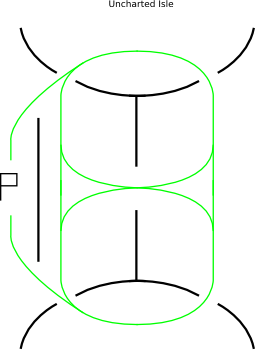 |
|
 Jan 19, 2007, 07:33 PM // 19:33
Jan 19, 2007, 07:33 PM // 19:33
|
#1 |
|
Frost Gate Guardian
Join Date: Jun 2005
Guild: Earls Cendrée [TEA]
|
Hi and welcome to the first in a series of three about maps, positional play and tactical movement. Nomenclature introduced in this article forms a foundation for the content in the other two articles. This series is my attempt at creating a basis for discussions of GvG tactics - Something that I think is underrated as compared to build mechanics on pretty much all forums I read. Please bear in mind that all the below is my opinion, and might very well be wrong. If someone makes good objections or suggests useful additions to the any of the guides, I'll be happy to update them. This series is a mere introduction, and may seem a bit basic for the experienced player, but I hope some guilds can improve their play as a result of them. And so, without further ado, I give you:
Map categorization and schematics It has long been known among teams active in GvG play that certain maps share characteristics in how they play, tactics wise. This installment is all about map categorization. I have identified a few distinct map types, most of which I will be speaking of in this article. The types are: Open, Circular, Triple Torus, Figure-eight, Toastrack, Hourglass, Solitude and Frozen - The names deriving from the common movement patterns one might see on the map in question or from a unique hall layout. Pretty much all current GW guildhall maps can be categorized as one or the other. When calling and thinking about tactics, it is important to know what movement will work on what kind of map. And of course what map type the match is on! The maps shown here are simplified to ease overview. The green lines show the common movement paths that are used on the map in question. Open map. The only the isle of Solitude currently falls under this category. Open map play is signified by free movement, split teams must take care not to get caught by a full team cutting off their movement by moving on a diagonal.  Circular map. Maps falling under this category are isles of Burning, Nomads and Corrupted. Both Nomads is circular by virtue of great distance rather than walls. Circular maps are signified by great advantage to the team that can first pressure a split force, either on the main or back gate path. Sending reinforcements is costly in time, and unlikely to arrive in time.  Triple Torus map, a variation on the Circular map that offers more movement options. This category includes Isles of Meditation, Wurms and the Dead Isle. Triple Torus maps are similar to circular maps in that once committed on the back-gate path, a split is slow to pull back to assist the flagstand team - on the other hand, one does not have to pass through the opposing guildhall in order to pull back.  Figure-eight map, a very commonly used type. Figure-eight maps are Wizards and Warriors isles. Catapults are a common feature of this map type. Figure-eight maps often feature fluid motion in confined spaces. This favors fast-moving teams, as there are few short-cuts that a slower but bigger split can use to catch the fleeing force.  Toastrack map. Maps purely of this category currently include only Druids Isle. Toastrack maps share properties both of the Open map and the Figure-eight maps, encouraging much motion, yet featuring few short-cuts and diagonals. On Druids Isle, the map is complicated by the use or non-use of the vine seeds. Not having a back gate may be good if playing against a split team, but bad when turtling, as it will prevent an Offensive Split response.  Hourglass map. Maps in this category include Isles of Jade and Imperial Isle. Imperial actually have a rather large "waist" around the flagstand, but since there are no viable alternatives to traversing that area in approaching the opponents gates, it still falls into this category. Maps of this sort often feature pitched flagstand battles, and are thus common amongst spike reliant teams that depend on the choke point in the middle of the map to force an eight-on-eight.  Uncharted Isle is a unique map type, and would superficially look similar to a Figure-eight map, but does in fact play very differently, since flagruns can be contested just outside the front gates, often leading to heavy fighting away from the flagstand.  Frozen Isle is a special case as well - Unique in several respects. The hall layout is different from all others, with the flagstand far off to the side like the Uncharted, but on a more open approach. The gate and switch system in the middle of the map also offers intricate plays. Many split teams favor this map for the multitude of movement options.  There are two more special cases, Isle of Weeping Stone and Hunters Isle. Weeping Stone is at the same time a Circular map and a Figure-eight map, depending on whether you control the flagstand gate. Hunters isle resembles a Toastrack layout on the defending side, but a figure-eight on the guesting side. This concludes the introduction to maps and map categories - With this foundation, we may proceed to talk about positional play Last edited by Xanthar; Jan 21, 2007 at 03:43 PM // 15:43.. |

|

|
 |
|
«
Previous Thread
|
Next Thread
»
| Thread Tools | |
| Display Modes | |
|
|
All times are GMT. The time now is 06:05 PM // 18:05.





 Linear Mode
Linear Mode


